

|
|
| 1. Long Island Records |
2. Surname Databases |
3. Long Island Reference Books on CD |
4. SITE SEARCH |
MONTAUK POINT, LONG ISLAND
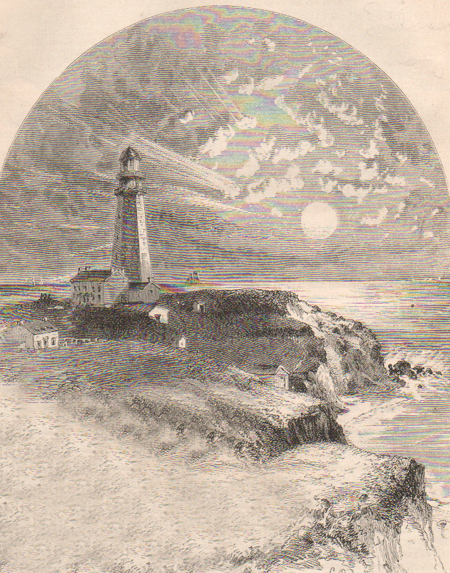
|

|

|
|
"The
golden sea its mirror spreads
Beneath the golden skies,
And
but a narrow strip between
Of land and shadow lies.
|
|
"The
cloud-like rocks, the rock-like clouds'.
Dissolved in glory float,
And,
midway of the radiant flood,
Hangs silently the boat.
|
|
The
sea is but another sky,
The sky a sea as well,
And
which Is earth, and which the heavens,
The eye can sesrceiy tell.
|
|
"So
when for us life's evening hour
Soft-fading shall descend,
May
glory, born of earth and heaven,
The earth and heavens blend.
|
|
"Flooded
with peace the spirit float,
With silent. rapture glow,
Till
where earth ends and heaven begins
The soul shall scarcely know."
|
|
The sun has gone, and as the twilight deepens, the full, silver-faced moon
rises above the picturesquely wooded "Sands Point ;" and the Star in the
light-house grows in brilliancy as the darkness increases. We are loath
to leave the deck, but supper is ready, and our appetites sharpened by
the fresh air, persuade us to go below.
One hour later the pageant of the evening had dissolved, and now the moon looks down, throwing her silvery light in gentle ripples to our feet. The air is full of mystic softness. Our artist friend talks of the Mediterranean, of ' ter than we had anticipated, winding through Capri--its rocks and grottoes--of Venice, of Turner, the great interpreter, of life in Rome; and art, with all its inspiring memories, crowds upon us. The bachelor of our party chants in a Minor key, |
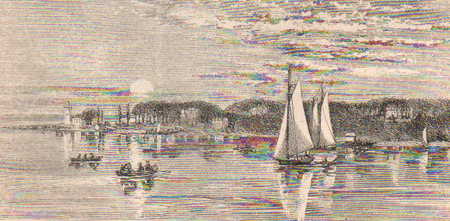
|
|
"Ask
me no more: the moon may draw the sea;
The cloud may stoop from heaven and take the
shape,
With fold to fold, of mountain and of cape;
But,
oh, too fond, when have I answered thee?
Ask me no more."
|
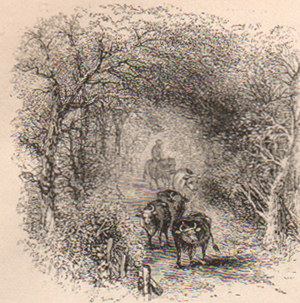 |
 |
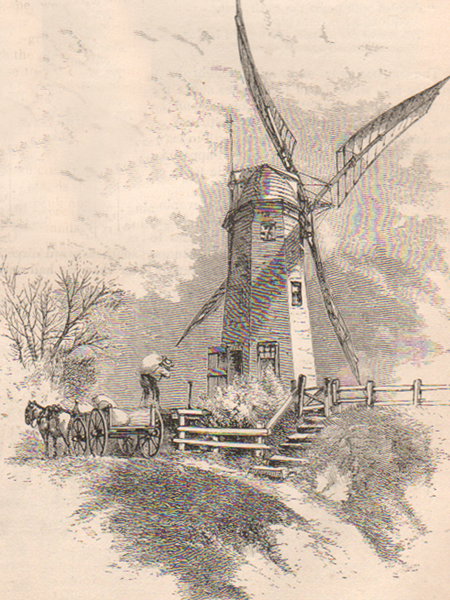
|
|
"Amidst
the storm they sang;
And the stars heard and the sea:
And
the sounding aisles of the dim woods rang
To the anthem of the free.
"The
ocean eagle soared
From his nest by the white wave's foam,
And
the rocking pines of the forest roared:
This was their welcome home."
|
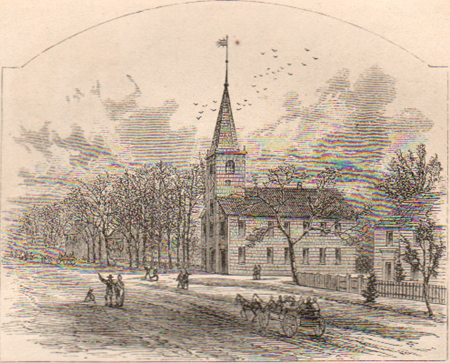
|
The "old church" represented in the vignette was built in 1717. The bell and clock are over a century and a quarter old. Its first pastor received for his support "forty-five pounds annually, lands rate free, grain to be first ground at the mill every Monday, and one-fourth of the whales stranded on the beach." On the death of Dr. Buel, the third pastor, in the year 1799, Rev. Lyman Beecher was settled over the church. Referring to Dr. Beecher's autobiography, we do not find that he makes any positive statement as to the addition made to his income through the misfortunes. of "stranded whales;" but we do learn, however, that ''as late as about 1700 it is said that a woman named Abigail Baker, in riding from East Hampton to Bridgeharnpton, saw thirteen whales along the shore between the two places." Dr. Beecber married immediately after his settlement, and the following narrative, communicated to his children, allows the difficulties which he and his wife encountered in setting up housekeeping. "There was not a store in town, and all our purchases were made in New York by a small schooner that ran once a week. We had no carpets; there was not a carpet from end to end of the town. All had sanded floors, some of them worn through. Your mother introduced the first carpet. Uncle Lot gave me some money, and I had an itch to spend it. Went to a vendue, and bought a bale of cotton. She spun it, and had it woven; then she laid it down, sized it, |
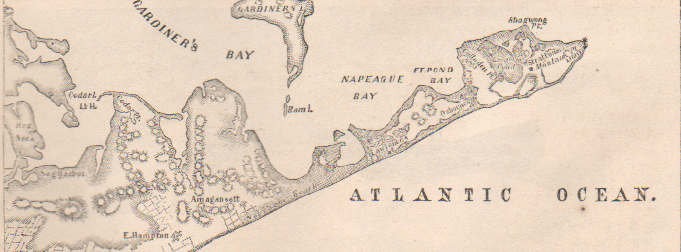
|